And thus, 2023 concludes, for me, with a picture-perfect rendition of the proverbial 'save the best for the last' scenario ...
My acquaintance with Japanese historical (or period) crime/detective fiction is limited to only a handful of works: Kidō Okamoto's Hanshichi torimonochō (translated as The Curious Casebook of Inspector Hanshichi : Detective Stories of Old Edo, University of Hawai‘i Press, 2007) and a couple of manga and anime series such as Shōtarō Ishinomori's Sabu to Ichi Torimono Hikae (Sabu and Ichi's Detective Tales), Shōtarō Ikenami's Onihei Hankachō (adapted into a long-running manga series by Sentaro Kubota and Takao Saitō, as well as a 2017 anime series), Yuichiro Kawada and Takase Rie's Edo no Kenshikan (Edo Coroner), Fuyumi Ono and Niki Kajiwara's Toukei Ibun (Strange Tales of Tokyo), Kei Toume's Genei Hakurankai, and maybe a couple more. To this list, I now have the privilege and good fortune of adding Honobu Yonezawa's acclaimed, award-winning novel from 2021, Kokurōjō (translated as The Samurai and the Prisoner, Yen Press, 2023).
The period in which The Samurai and the Prisoner is set—1578–1579, falling in the last quarter of the Sengoku era—predates the historical setting of the other aforementioned works. This makes for interesting outcomes. For one, this is a far more chaotic time in history, marked by incessant, excessive warfare and strife, compared to the Edo and later periods. Second, the more visible difference is that the resulting focus or the gaze of this novel, unlike that of the ones set in the later Edo, Meiji, Taisho or Showa eras, is not as much on introspection that seeks to shed light on the internal decay or rot in society, as it is on the 'insider-outsider' dichotomy and the intrigue surrounding the relationship and politics between different clans and warlords negotiating who they want to ally with and who to fall back on in case of a betrayal.
What also gives the novel a distinct identity is the fact that the events of the novel transpire within a fortified castle besieged by enemies, within and without. Honobu's story picks on the historical events of the second siege of the Itami Castle (or Arioka Castle), orchestrated by Nobunaga Oda, the famous daimyō (feudal) and one of the "three Great Unifiers" of Japan. His plans for the ruthless conquest of the northern Settsu province (consisting of parts of the modern-day prefectures of Hyōgo and Osaka) hit a roadblock when one of his allies, the general Murashige Araki, betrays the Oda in 1578. Araki—driven partly by his own ambitions and mostly due to his horror at the excesses of the Oda's brutality—seeks to mount an opposition against Nobunaga, with the help and support of the Mōri clan, an influential and powerful family in the Aki province (the western portion of modern-day Hiroshima prefecture), and the Buddhist temple-fort of Hongan-ji in Osaka. Araki holes up in the Arioka Castle (effectively a castle-city in Itami) with his commanders and members of several other clans who contribute to the army/military efforts, and his concubine Chiyoho, a 'blessing' and a 'gift' from the Hongan-ji to Murashige for helping defend them.And so it is, at the start of the novel in November 1578, when Araki receives a visitor called Kanbei Kuroda, a retainer of Hashiba Hideyoshi (a lord under Nobunaga; later Hideyoshi Toyotomi, the second of "three Great Unifiers of Japan") of Chikuzen province, who arrives to ascertain whether Murashige had indeed turned his back on the Oda, and to advise him against taking such a course of action. However, Araki goes on to capture Kuroda after a brief but bloody struggle. Instead of having him executed (which was the norm back then, and a matter of honour), Murashige throws him in a cage in the dungeon in the depths of the castle, alive but severely wounded—a truly ignominious fate for Kanbei.
The four short stories that form the bulk of the novel span the following year, corresponding quite accurately to the historical timeline of the conquest of the castle. The stories, divided according to seasons (winter, spring, summer, and autumn) follow a common pattern—strange, unsettling events threaten to undo the goodwill and harmony not just among the clans and commanders, but also among the masses, for reasons directly or indirectly tied to the events. Each time, Murashige has to rely on Kanbei's extraordinary intellect to get to the truth behind the incidents. The bad blood and further developments between the two influences the evolution of their relationship, with the result that Kanbei does not provide outright answers to the mysteries narrated to him (instead, replying in convoluted riddles), and plots behind Murashige's back.
In the first story, a young hostage from a clan that betrays Murashige's faction is found dead in a closely guarded storehouse surrounded by an unfinished garden covered in snow. In the second story, a successful, surprise, nighttime attack leads to the elimination of an enemy camp hidden perilously close to Arioka Castle. However, unrest brews when the decapitated heads of two high-ranking enemy officers are switched during a head-identification session, and the camp commander's head is not found despite definite reports of his demise. Ugly rumours spread within the city, and a Christian place of worship is burnt to the ground leading to the death of a person. In the third story, a revered priest-messenger and a member of Murashige's personal guard-force are murdered in an old hermitage and its environs. The priest had been entrusted to convey a secret message and a treasured possession of Murashige to a samurai serving under an enemy general Mitsuhide Akechi (who would later force Nobunaga to commit seppuku in the Honnō-ji Incident of 1582). The article in question was stolen, while the secret message, even though left intact, had already been read by parties unknown—a development that, apart from hinting towards the presence of a potential traitor within the castle, meant certain doom for Murashige and Itami, especially in the face of defections by the generals and commanders in neighbouring forts and castles, as well as the rapidly declining morale of the soldiers who still stood beside Araki. The fourth story ties some of the loose ends in the preceding chapter, sees Murashige try to uncover a conspiracy and Kanbei enact his 'revenge' before the castle's inevitable fall, and heads off towards a surprising but extremely logical conclusion.
Seen in a vacuum, the mysteries can be dissected fairly easily. But, to better understand Murashige's struggles against them, it is necessary to look at and identify the numerous battles he was fighting on multiple fronts. And, it is here that the novel excels—without passing judgement, Yonezawa continuously sprinkles the narrative with details that give great insight into the socio-cultural and economic status of samurai and commoners, cutting across different strata, while also depicting, time and again, the mindset of the people, their religious beliefs, and the rituals and practices they subscribe to. All of these myriad, divisive elements determine the context, and ensure that the characters do not act in ways that seem too forced, unnatural or absolutely out of sync with their historical persona. For instance, in the first story, Yonezawa describes the standing and importance of the multiple clans in the war council, delving into their background, and the story behind their participation in the faction and reasons for doing so. These details give readers some idea of the possible frictions between clans and individual members inside this faction, while also explaining why Murashige personally analyses the so-called 'betrayal' of his close allies in a very measured, sympathetic manner. Yonezawa also fleshes out the story and background details of each member of his personal guard in vivid detail (even pertaining to their mastery of individual weapons), to explore who would want to murder a hostage, going against his explicit orders not to. The problem is, nearly all of the influential personalities or the suspects who had an opportunity to and even the victim himself wanted the hostage dead, so that an example could be made out of him, with many of them expressing surprise and discontent at Murashige's decision to spare him. Furthermore, there is also the mystery of the vanishing weapon and the no-footprints-in-the-snow conundrum to deal with. On a different note, Murashige also has to deal with the curious incident of a fort near the castle borders not reacting to the summons to join a skirmish in time. Little wonder then that Murashige—who is also continuously planning and trying to maintain harmony between the individual clans and their heads, and uplift the spirit of his troops—finally has to take the help of the prisoner, Kanbei, despite his unwillingness. Ultimately, the solution, which makes great use of the positional awareness of the culprit, the details provided by the author regarding the weapons stored in the castle, and some inspired ingenuity on the culprit's part, is one that could only have been employed in the special setting of a besieged castle at its time of occurrence. In the second story, religious beliefs and the 'insider-outsider' dichotomy take centrestage, as the missing head of the commander becomes a flashpoint that ignites tempers between the members and followers of a clan subscribing to Buddhist faith and the adherents of another clan which has taken up Christianity. Once again, Yonezawa describes, in minute detail, the circumstances of the ambush and the sequence of events leading both to the replacement of heads and the commander's head going missing, paving the way for a simple, logical reveal. Additionally, the beliefs and religious alignments of the masses, the samurai and the clans are outlined with great care, providing more motives to a larger cast of characters. Then, there's the larger picture, with rumours and gossip about more potential defections among Araki's allies—and once again, Murashige finds himself besieged by too many enemies and wars to fight.
But, there are undercurrents to the novel as well. It can be read at several levels—but, for me, there are at least two major ones. One of them is, of course, the constant intrigue surrounding wars, battle strategies, potential alliances, betrayals—and this is mostly limited to the samurai class. Considerations of honour, prestige and status inform this level of narrative and its underlying rules—the interactions of Murashige with his commanders, guards and soldiers (both personally as well as in the war councils) and with Kanbei are representative of this. The other major level is the religious subtext, that assumes greater significance further into the novel. In the limited confines of the castle, the interplay between three major religious sects/practices—True Pure Land Buddhism (also known as Jōdo Shinshū or Shin Buddhism), Zen Buddhism and Christianity—propels the narrative in subtle ways. It is this subtext that unites the other spectrum of the population (the masses) through the promise of salvation and fear of divine punishment. Seen in this light, despite the overall chaotic atmosphere of doom and gloom, an uneasy peace does exist in the midst of the town's populace outside the inner citadel and the samurai quarters. In his quest to unearth the rational nature of the truth behind the incidents, Murashige fails to read the pulse of the people until late into the novel. For the common people, the deaths and the mysterious incidents could be attributed to a form of divine justice or the Buddha's wrath, reinforcing their faith in the real existence of these concepts, however abstract they may be, and providing solace to them in the face of a doomed war, unceasing brutality and killings, by suggesting that even the Oda and their allies will not be spared from such justice and that they would have to pay for their sins, sooner or later. This also explains why the sentiments of the masses are best seen after the murder of the revered priest and the subsequent divine punishment meted out to the perpetrator (a perfect cause-and-effect, or 'reap what you sow', scenario for the observers), and why passions rise against an 'outsider religion' like Christianity. Unfortunately, for Murashige, he is unable to bridge the gap between these two levels, ironically due to the lack of an introspective view of his own fiefdom. As a result, he is unable to stay true to his own tenet that the people make the castle, and finds himself, unwittingly or driven by circumstances, walking a path similar to that of Nobunaga Oda—a fact he rues late in the novel. The reason for his failure, as pointed out by his concubine Chiyoho, lies in a fundamental difference in the faith and creed of a samurai and that of a simple, god-fearing, common person, in those times. For a samurai clothed in armour and wielding weapons, the bravery and valour embedded in their being makes it impossible for them to understand that fabricated omens and concepts such as divine retribution could honestly be 'believed' by one. After all, the question of their survival depends on their cunningness on the battlefield and how attuned they are to their immediate reality and surroundings. Above all, as stated by Murashige, samurai fear death the most. For common people not protected by any armour or weapons, who are constantly on the receiving end of massacres by warlords, the reality is not so straightforward. It is possible to engender hope among them through talk of fabricated omens and the spread of ideas such as divine miracles, punishment and retribution, especially as they need something to hold to at a time when they are subjected to unending torture. And, that is why, as stated by Chiyoho, they fear not death itself but the fact that they may not achieve salvation or reach heaven even after dying. Besides adding another layer of historical authenticity (with events such as the Ikkō-ikki rebellion and the subsequent massacre of the sect at Ise-Nagashima serving as one of the backdrops), the religious subtext therefore also opens up a wealth of theological discourse of an admirably high quality, through the conversations between the characters who fulfil the role dictated by the needs of the mystery plot while staying true to their historical personas—a very difficult act to pull off, in my opinion.
A quick note about the translation—it is slightly inconsistent (words like 'damn' sharing space with archaic terms like 'prithee' and 'ye' feels anachronistic, to put it lightly), the setting may need some time to sink one's teeth into, and the need for footnotes is sorely felt. But it is well worth the effort, time and money to procure a copy. Yonezawa does not rewrite or reinvent history in this book—the Itami Castle siege ended in November 1579, and a total of 670 people (women, men and children included) were executed by Nobunaga, in Itami, Kyoto and Nanatsumatsu (near Amagasaki, in Hyōgo prefecture). No further worthy deeds of Murashige Araki have been recorded either. However, what he does most skillfully is weave in tales of mystery and intrigue into the seams of Arioka Castle—tales that elevate the work from the status of simply being a work of only mystery or historical fiction. By using real-life figures and events, Yonezawa bestows life upon his craft, turning it into a living, breathing, plausible document of the times that shares an extraordinary synergy with its mystery and historical elements, and its many other subtexts.
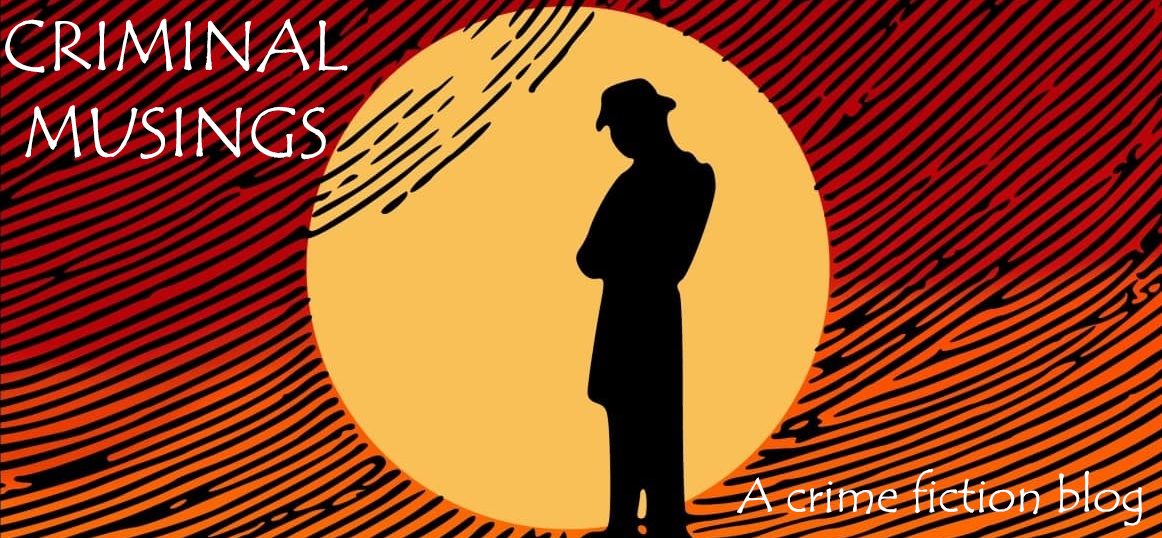


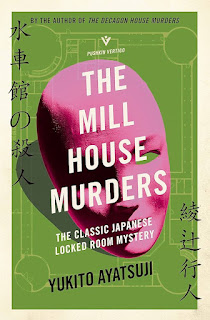

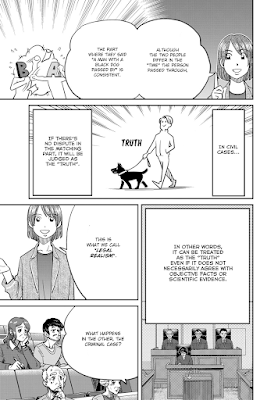


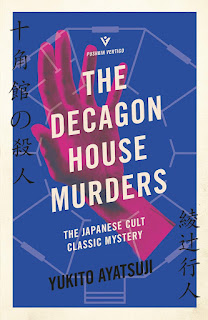
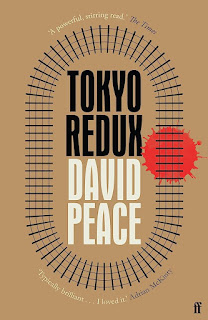



.jpg)
.jpg)